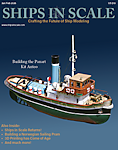Thank you Allan
I have that drawing but have, to date, not seen a reason to study it. This brings up a question. How do you discover the changes between documents? Are you looking for an answer to a question or do you study and compare drawings? I spent some time yesterday looking at the two drawings. From station 2 aft and station A forward I see no changes. With the lack of detail on the inboard profile plan I cannot see that much has changed other than moving the midship mark. Seems like I should just keep moving until I have to make the midship frames/bends.
warren
I have that drawing but have, to date, not seen a reason to study it. This brings up a question. How do you discover the changes between documents? Are you looking for an answer to a question or do you study and compare drawings? I spent some time yesterday looking at the two drawings. From station 2 aft and station A forward I see no changes. With the lack of detail on the inboard profile plan I cannot see that much has changed other than moving the midship mark. Seems like I should just keep moving until I have to make the midship frames/bends.
warren




